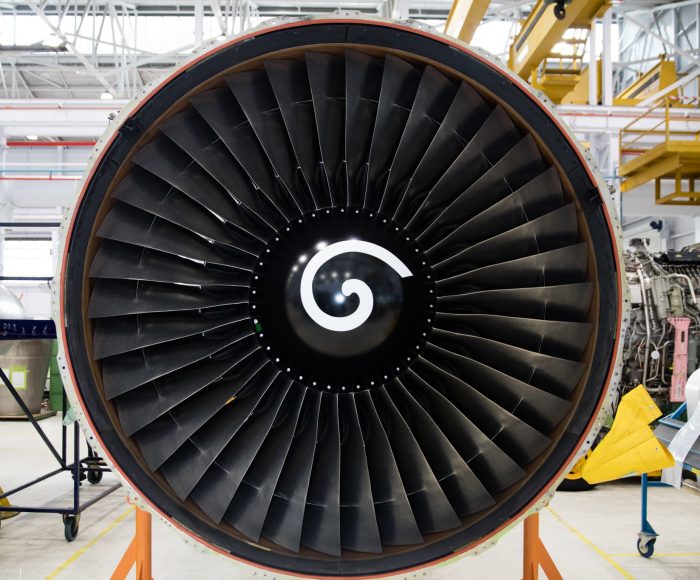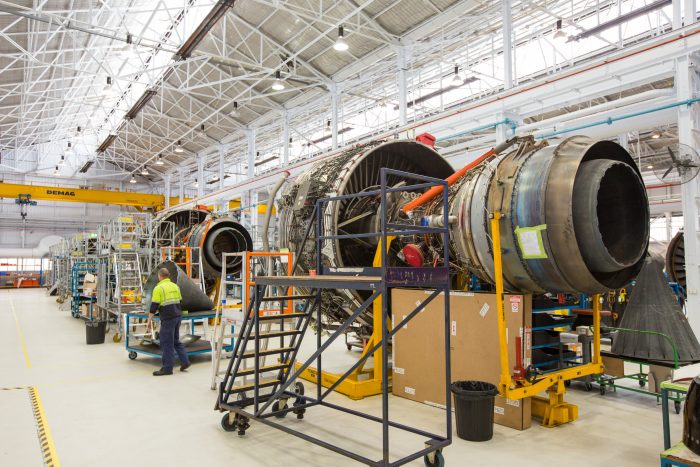
You can tell that this is a General Electric engine because the white swirl is a stylised letter “g”. When the engines are running the white swirl creates a white circle which deters birds from flying into the engine
Weighing in at least two tonnes and costing tens of millions of dollars – a jet engine is what literally keeps our airline flying.
Whether it’s the Rolls Royce Trent 900 on the A380s or the smaller CFM56-7 on our Boeing 737s these machines are super sophisticated and super expensive.
They’re also super powerful – generating enough take off power for a fully laden aircraft to altitudes of almost 13kms into the sky. And then push it at close to the speed of sound to your destination. Some avgeeks can even tell which aircraft is flying overhead after take-off just by the noise the engines make.
So how do these powerhouses of aviation get our aircraft off the ground?
- Put simply, air is sucked into the engine through the fan blades and flows into a compressor where the speed, pressure and temperature increases.
- The air moves through to the combustion chamber and as is mixed with fuel which when ignited results in high temperature and high energy airflow.
- The burning gas then moves through the various stages of the turbine extracting energy from the expanded gases. The turbine is connected via an internal shaft to the fan, as the turbine spins faster so does the fan creating increased thrust.
- Thrust is the energy created and is what propels the aircraft forward.
- Most modern airliners are fitted with turbofan engines where the majority of the thrust is produced by the fan, making these engines powerful, quiet and fuel efficient.
With more than 350 engines powering more than 150 jet aircraft across the Qantas fleet, it’s crucial we keep each and every engine running at its peak performance.
The engines are given the once over between flights and undergo more detailed checks during scheduled heavy maintenance, which you can read all about here.
During these bigger jobs, engines are removed from the aircraft. On an A380 it can take a team of 10 engineers up to 14 hours to swap an engine on and off the plane. In fact last month, engineers did two engine swaps on one of our A380 aircraft.

Inside the Aero Shop where our engines are prepped before they’re overhauled
It’s a delicate job involving steel cables, pulleys, chains and lifting devices to manoeuvre the engine on and off the wing. There are a lot of wires for the electricals and pipes for fuel, hydraulics and exhaust.
The engine is then transported to the Qantas Engine Aero Support Shop where it will be prepped so it can be shipped off to the manufacturer for an overhaul before it comes back and returns to service.
We take excellent care of our engines, on and off the wing. And we were a little bit proud when in 2008 we achieved a world record for commercial engine reliability with one of our General Electric CF6-80C2 engines operating for 42,019 hours on the wing without needing to be removed. That’s the equivalent of operating 1000 return trips from Australia to the UK.
Watch an eight hour engine change being completed in just 40 seconds below.